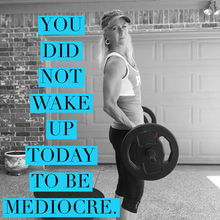When to Push Through and When to Pull Back
When you are in the midst of intense training for your iron distance race, it’s easy to disregard the signs of when you should pull back rather than push through. There is a difference between just being tired and being truly fatigued. In this article I am going to give you some clues that indicate that you need rest and recovery, not to push yourself harder.
A really good sign of cumulative fatigue is when you are hitting your expected training measures but the qualitative and quantitative feedback shows you are working harder than normal to achieve projected numbers. For example your HR will be higher than normal or you may have felt like you were working way too hard for the same workout that didn’t seem so daunting last week.
According to Ironman University here are some clues that might indicate a need to pull back:
1.Loss of hunger despite high training load. Although you are training 15-20 hours a week , your appetite is suppressed and you may even begin eating less.
2. Unusually sore muscles or sharp pains. Usually healthy soreness will dissipate within a day or two, but if it hangs around, this could indicate that you need rest.
3. Suppressed or elevated morning HR can be a sign of over training. Before you get out of bed in the morning, check your resting HR. If it is elevated for a few days in a row, chances are you need rest.
4. High RPE during training. Your normal workouts seem harder even though you are working at the same intensities. You just don’t feel yourself.
5. Broken sleep or night sweats. Sleep is necessary for recovery and if you’re not getting enough you are creating a snowball effect for increased fatigue.
6. Apathy towards training. I’ve seen this happen in people who are over training, not sleeping, and pushing themselves despite all the warning signs.
Here are a few more cues that may indicate you need rest and recovery, not to push harder:
-Irritable
-Weight gain
-Sunken eyes or fatigue around the eyes
-Gaunt looking
-Depression/anxiety
-Poor posture with slumped shoulders
-Lack of confidence
-Late getting to the pool or other workouts
-Dropped stroke rate while swimming
-Longer HR recovery period between intervals
-Persistent injury or illness
Take a good look at your training and how you are really feeling. Do you need to add a few rest days? Do you need more sleep? Are you eating healthy foods and replenishing your body after workouts?
How do I communicate the importance of recovery to athletes?
I integrate it into their program. As a rule, I always put one full day of recovery into my athlete’s programs. I highly recommend that this day be spent doing some type of self-care such as foam rolling, compression boots, massage, yoga, or mobility work. This day is for rest recovery and shouldn’t be spent doing any kind of hard training. Recovery has to be a lifestyle choice with plenty of sleep, good nutrition, etc.
What about you resilient athletes? You folks like to over deliver and go the extra mile (literally) but you need recovery like everyone else.
Usually if I encounter an athlete that wants more, I will add an additional lower intensity swim or ride to their program each week.
What about pushing through? I will tell an athlete to push through only if they don’t have any of the above signs of fatigue/over training. I will always err on the side of safety and recommend taking a day or two completely off. A couple of days off isn’t going to affect your overall fitness level over the course of 6 months of training. Why not give yourself some rest and recovery so you can be back at it full force on Monday?
Thinking about a coach for your next iron distance event? Click below for a free 15 min phone call so we can talk about your race goals!
Mary Timoney
Ironman University Certified Coach
ACSM Trainer
USA Cycling Coach



























Comentarios